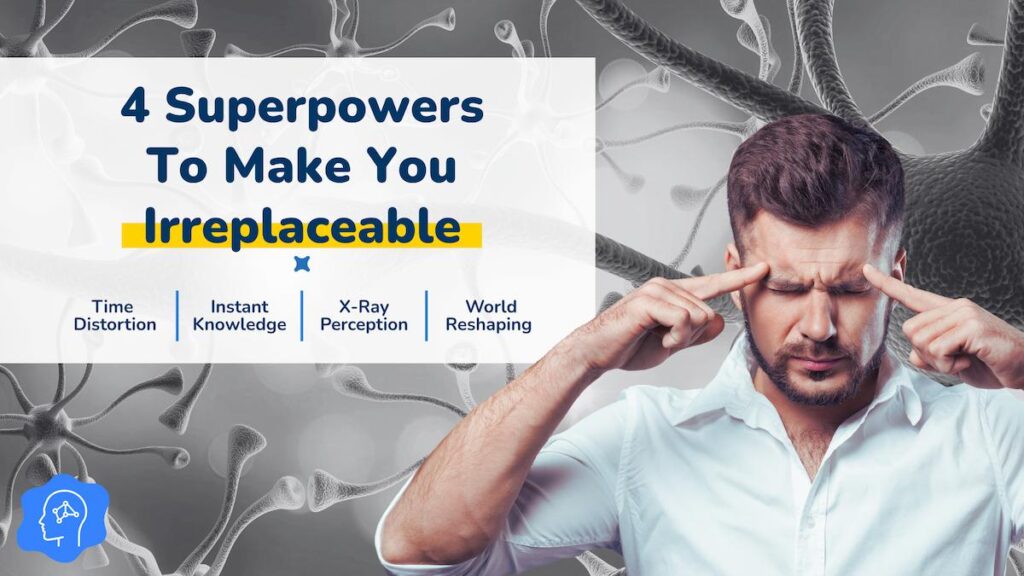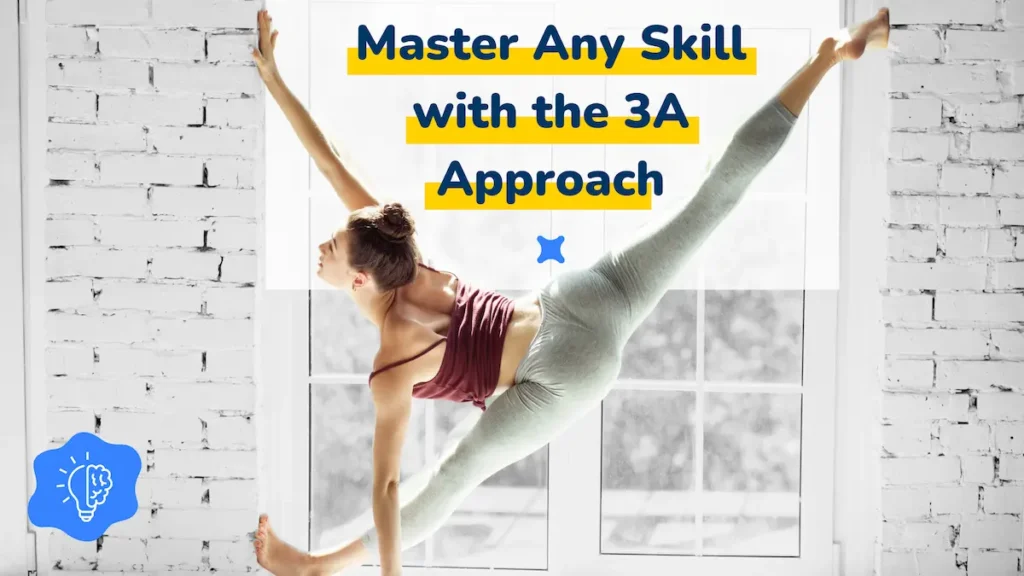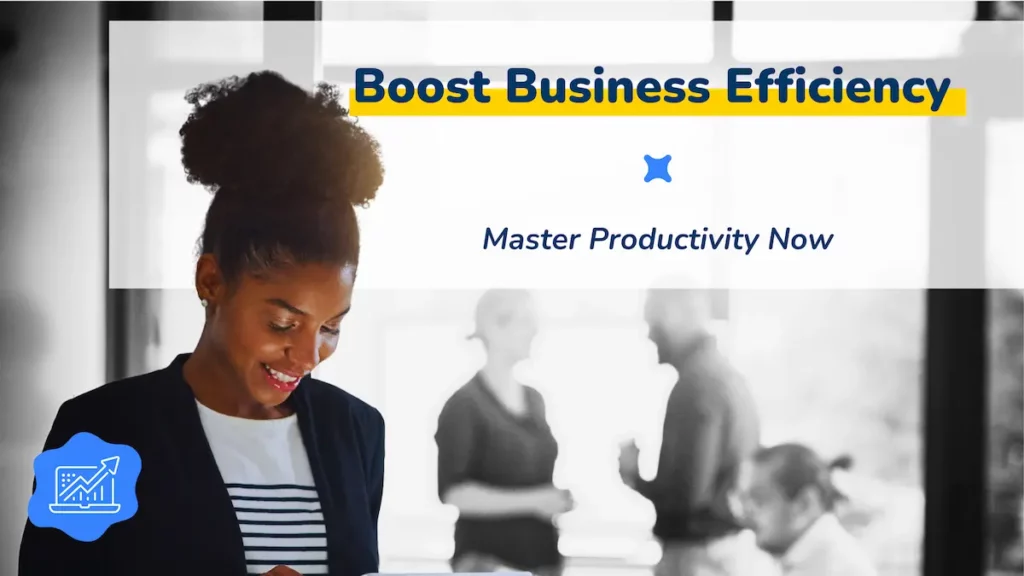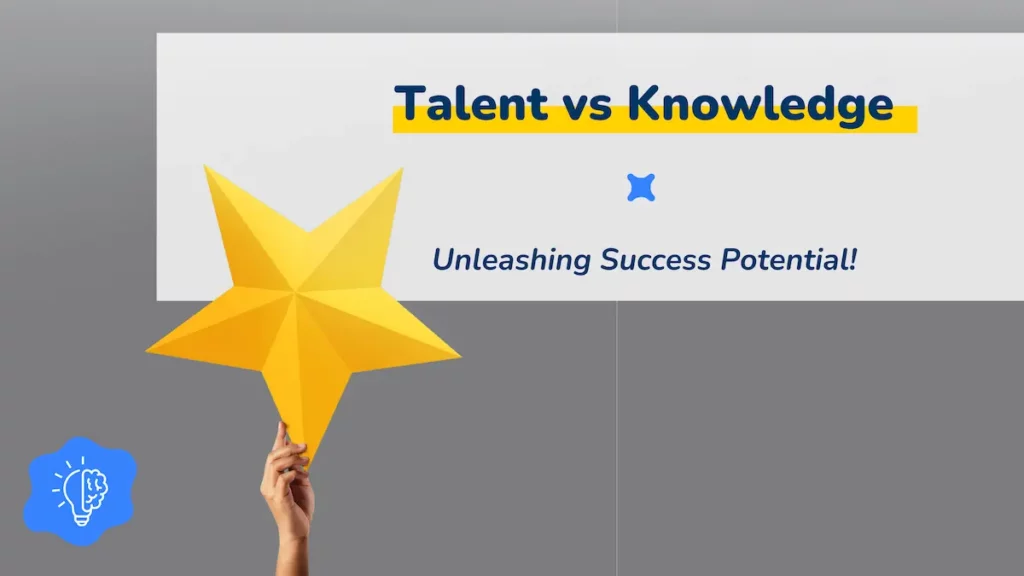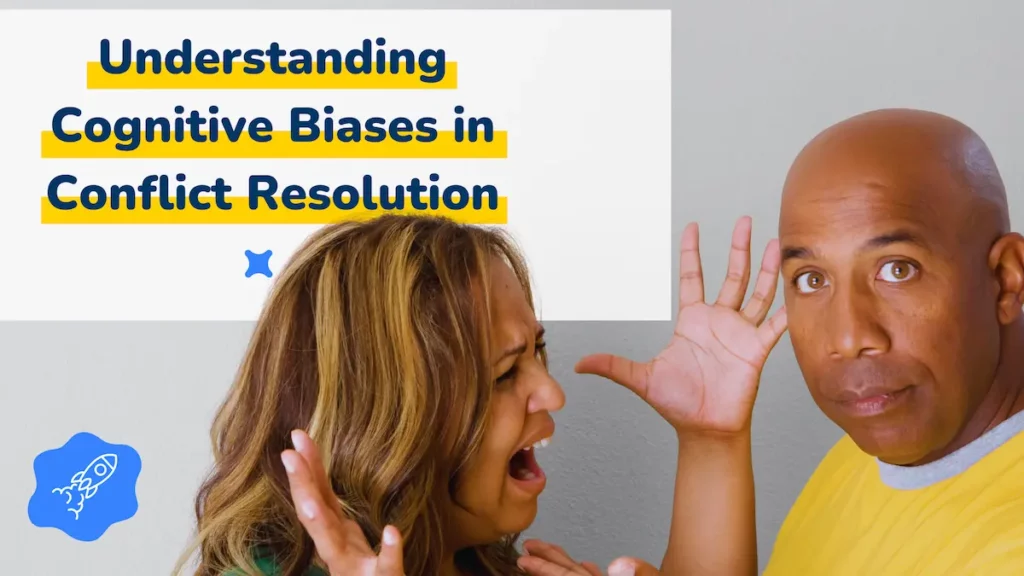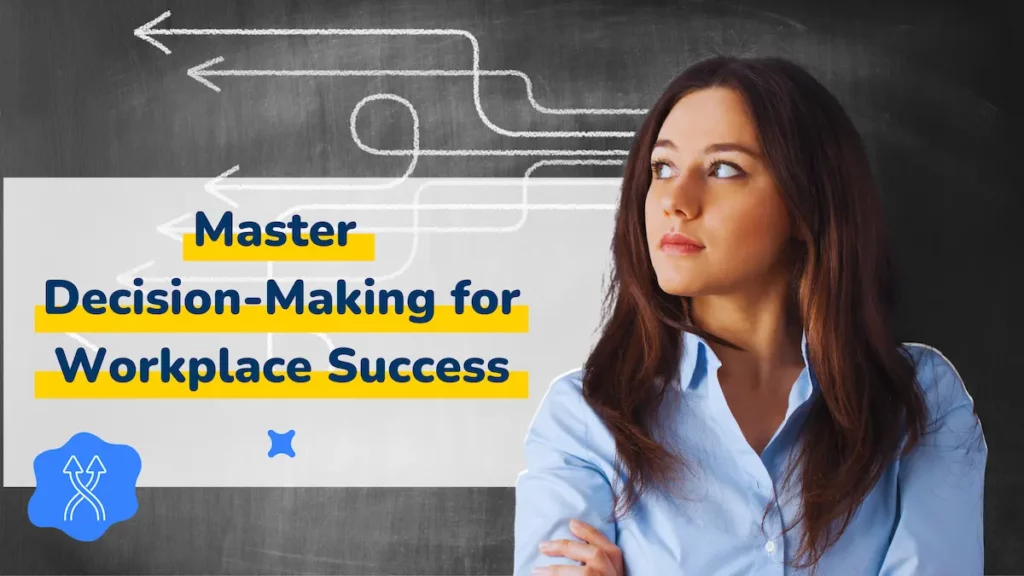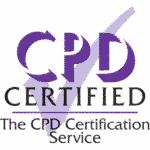The 4 Superpowers That Make You Irreplaceable
Everywhere you look, people are asking the same question:
Will my role be replaced by AI?
Technology is advancing faster than most of us could have imagined. Jobs that were once considered ‘safe’ are now being automated, digitised or outsourced. The line between human and machine is shifting daily.
So, how can you not only survive this shift, but also thrive in it?
From working with thousands of professionals, one consistent pattern emerges: the skills that safeguard your career are human, cognitive, and uniquely yours. These are not single tricks or isolated techniques. They are powers you can develop.
They are the 4 Superpowers that make you irreplaceable: Time Distortion, Instant Knowledge, X-Ray Perception, and World Reshaping.
Skills vs superpowers, and why the difference matters
Superpowers are clusters of skills and sub-skills that, when developed together, produce unmatched outcomes: judgement, momentum, meaning and influence.
- A skill is the ability to organise your day.
A power is the ability to master time so well that projects bend to your rhythm rather than the other way around. - A skill is the ability to memorise information.
A power is the ability to absorb knowledge so quickly that you’re ready for tomorrow’s challenges before most people have finished dealing with yesterday’s. - A skill is the ability to deliver a presentation.
A power is the ability to inspire action with your words, bringing about real change.
Skills handle tactics. Superpowers operate at the strategic level. Skills make you useful. A superpower makes you irreplaceable.
Superpower #1 – Time Distortion
The ability to set a rhythm you control.
This power keeps you moving forward, turning effort into progress, even when demands are high. Deadlines feel less like pressure and more like milestones that you have chosen.
Why you need it
- Do you start the day already on the back foot?
- Do you run fast yet never feel ahead?
- What would change if you set the pace?
What it looks like in practice
- A steady weekly cadence that compounds results.
- Protecting prime hours for high-value work.
- Clear boundaries that convert focus into throughput.
Superpower #2 – Instant Knowledge
The ability to learn quickly and apply knowledge in real time.
Information becomes insight. Insight becomes action. You move faster and think more clearly than those still catching up.
Why you need it
- How much time do you spend chasing updates in your field?
- What would change if people came to you for clarity?
- If a new skill was required for an opportunity tomorrow, how quickly could you be ready?
What it looks like in practice
- Rapid upskilling tied to immediate tasks.
- Confidently synthesising multiple sources into a single brief.
- Habits of teaching back that lock learning into memory.
Superpower #3 – X-Ray Perception
The ability to cut through complexity and see what matters.
Patterns, flaws, and opportunities appear sooner. You decide with confidence while others hesitate. You challenge assumptions, reframe the problem to find unexpected angles, and notice the subtle cues that others overlook.
Why you need it
- Are your meetings going round in circles without reaching decisions because the real question is unclear?
- Do projects stall because early clues were missed, or because the problem was framed too narrowly?
- What would change if you could consistently connect the dots, challenge the default view, and spot the detail that shifts the outcome?
What it looks like in practice
- One-sentence problem statements that remove ambiguity.
- Early risk flags with simple guardrails.
- Decisive trade-offs that prevent drift.
Superpower #4 – World Reshaping
The ability to turn ideas into action and results.
Decisions turn into outcomes. Communication becomes influence. Work doesn’t just exist; it changes things for teams and organisations.
Why you need it
- How many good ideas around you never see the light of day?
- How often does strong work remain invisible because of a lack of ownership and narrative?
- What would it mean to turn influence into outcomes others can see and trust, week after week?
What it looks like in practice
- Stakeholders are aligned around a clear, shared ‘why’.
- Defaults that make progress the path of least resistance.
- Visible wins that build trust.
How the superpowers compound
Rhythm, competence, clarity and results. A stack like this is hard to copy and even harder to automate.
- Time Distortion sets a reliable rhythm.
- Instant Knowledge keeps competence current.
- X-Ray Perception brings clarity to choices.
- World Reshaping lands the result.
How to start building them
These powers are trainable. To do so, you can use the inGeniusly’s 3A Approach: a practical framework for mastering any skill.
The 3A Approach is a method for turning learning into reliable performance: Acquire, Apply, Adapt. It pairs with deliberate practice so you target a specific behaviour, use it on real work, and improve in short, visible cycles.
We have published a complete guide on the 3A Approach that will help you apply it to your specific situation.
What each “A” means
Acquire
Gather the knowledge and techniques you need to achieve your goal. Learn the rules, how to play and the core strategies you will use.
Apply
Practise with intent. Use purposeful practice by setting clear goals, stretching beyond your comfort, and building accurate mental representations of the skill. Add deliberate practice by starting with expert mental representations:
- Fundamental skills: identify the building blocks and improve them one by one.
- Comfort zone: work just beyond ‘easy’ to rewire the brain.
- End goal: keep the target visible so you know what to apply and why.
- Feedback loop: rely on external feedback until you are consciously competent, then shift more to internal cues as you approach unconscious competence.
Adapt
Personalise how you learn. Work with a mentor who can help you shape your mental representations to fit your context. Look for three qualities:
- Consistency: they have produced results in the field.
- Competence as a mentor: they understand and can explain their own mental representations.
- Coaching skill: they can go beyond their own approach to help you develop effective representations yourself.
How to run a one-week 3A cycle
- Pick the needle-mover: choose one building-block skill and note the end goal and clear criteria for success.
- Plan your practice: schedule two or three deliberate practice sessions that push you just beyond your comfort zone. Use an expert model and decide how you will receive feedback.
- Apply what you have learnt to a live task within 48 to 72 hours and capture one metric and one learning point.
- Finally, adapt and lock: review with a mentor if possible, refine your mental representation and standardise what works. If you get stuck, narrow down the skill and start the next cycle.
Common traps to avoid
- Acquiring lots of sources without a clear question or success criteria.
- Skipping an expert model or checklist at the outset.
- Practising only in safe drills instead of performing a live task within a few days.
- Relying on internal feedback too early without any external input.
- Tweaking your approach without a metric so that you cannot tell if it has worked.
Where to find concrete starters
Each article in this series offers examples and possible ways to improve Time Distortion, Instant Knowledge, X-Ray Perception and World Reshaping. Use these to run your first 3A cycle, then adapt the behaviours to suit your role and constraints.
Your human advantage
Technology will continue to advance exponentially. The advantage lies with those who can create clarity, exercise sound judgement and deliver outcomes that others can trust.
Develop these four skills and you won’t just keep up with change — you’ll lead the way. You set the pace.
Ready to map your superpower profile?
To gain a comprehensive understanding of your strengths across these powers, take the Inner Genius Assessment.
You will receive a full report on your cognitive skills and how they combine to create your unique superpower profile, along with clear next steps for developing them.
